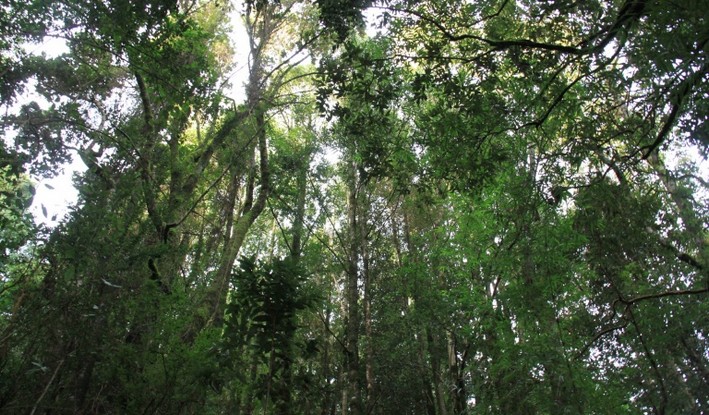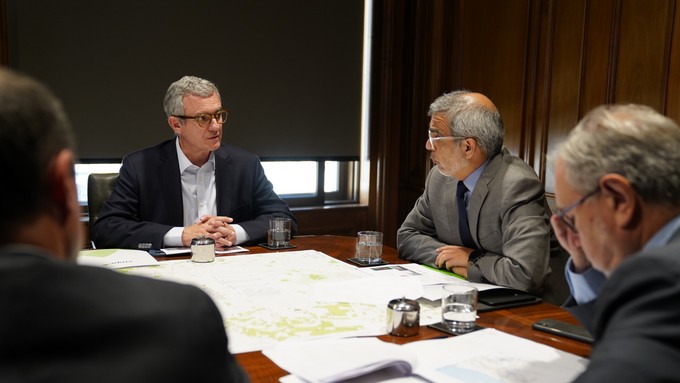Research to Evaluate the Resistance of Chilean Pine Wood in Seismic Conditions
In recent years, countries such as the United States, Canada, and several European nations have driven a new trend in the construction world: erecting tall buildings using mass timber, particularly a material known as cross-laminated timber, or CLT for short. This system, considered a kind of "superwood," is manufactured by bonding layers of wood at crossed angles, giving it exceptional strength and stability.
CLT is part of what is known as mass timber, a category of large-scale wood products designed to serve as a structural alternative to concrete and steel. Thanks to its mechanical properties, appearance, and versatility, this type of wood allows for the construction of large-format floors, roofs, and walls. Additionally, it is a renewable material with a significantly lower carbon footprint than traditional materials, making its use conducive to a more sustainable approach in urban construction.
New Systems
In Chile, construction has historically been dominated by the use of reinforced concrete, a composite material that combines concrete with steel reinforcement bars to increase its strength and load-bearing capacity. However, the incorporation of new construction systems, such as those based on wood, requires rigorous scientific studies to validate their performance and establish a solid technical foundation for their nationwide implementation—especially in a country as seismic as ours.
In response to this global trend, academic Dr. Erick Saavedra is leading a Fondecyt Regular project that proposes the development of high-fidelity multiscale computational models. These models will help anticipate the performance of such buildings under extreme earthquakes, optimize structural design, and generate new strategies to improve lateral stability and reduce post-seismic displacements. The research will focus on the use of Chilean radiata pine, a species widely used in the national forestry industry.
“The wood we are using in this study is Chilean radiata pine, which has a complex microstructure that includes porosity, moisture, and other material-specific characteristics. This represents a major challenge from a computational modeling perspective because we need to capture all that microstructural richness to accurately predict its seismic behavior,” explains Dr. Erick Saavedra.
Radiata pine is the most prevalent forest species in the country and stands out for its low weight, good stiffness, and availability, making it an ideal candidate for sustainable structural solutions. If its application in tall buildings proves viable, it could have a positive impact on both the construction industry and society at large, promoting more efficient, ecological, and Chile-adapted building systems.
Sustainable Material
“Unlike traditional materials like concrete or steel, whose manufacturing processes generate high carbon dioxide emissions, wood presents itself as a more sustainable and environmentally friendly material. It is renewable, stores carbon, and requires less energy for processing. Additionally, when properly designed, it can resist fires, as carbonization occurs superficially while preserving its internal mechanical properties,” explains Dr. Erick Saavedra.
The project, supported by the Directorate of Scientific and Technological Research of Vriic, proposes, on one hand, the development of high-fidelity multiscale computational models capable of accurately simulating the dynamic behavior of hybrid wood-concrete structures. On the other hand, it involves conducting experimental tests on a shaking table—simulating extreme seismic conditions on one- or multi-story structures built with cross-laminated timber and reinforced concrete.
“These tests will be unique at the national level and will allow us to build and test large-scale structures, some several stories high, ultimately enabling us to reproduce the effects of earthquakes on these buildings. This would be a major advancement for the country’s structural engineering,” states the academic.
During the first stage of the project, experimental studies will focus on analyzing structural connectors, both in wood-to-wood and wood-to-concrete joints—critical components for the overall performance of hybrid buildings. Simultaneously, the development of the multiscale computational model will begin, initially focused on representing wood behavior at a small scale, considering its internal structure, porosity, and moisture content.
As the project progresses, numerical modeling is expected to encompass larger structural scales, including elements such as beams, columns, walls, and CLT slabs. These advancements will be accompanied by new experimental tests, allowing for a comparison between simulation results and the real-world behavior of construction systems before proceeding with vibration tests.
“I believe the challenge lies in generating results with practical value that can translate into recommendations for both structural design and construction aspects. That is the major contribution we hope to achieve with this project,” concludes Dr. Erick Saavedra.

















